When we are asked about how to grow a bonsai tree, we mostly reply with stem propagation, where we take a leaf or a stem from a regular tree to make a miniature tree, which is a bonsai. What if I were to tell you that that’s not true? We can grow a bonsai from scratch! What a rewarding process it will be to watch a bonsai grow from the start! It takes a little time, but if you give it your love, care and your time, it will flourish under your care and grow up to be a beautiful bonsai tree.
Also, nothing can be better when you can be involved in every part of the bonsai tree’s journey to adulthood. That bonsai tree will be your very own baby! How do we do this? From seeds! In this article we have listed down everything you need to know to grow your own baby bonsai tree from seeds. So wait no further and start reading!
Ceramic pots are a popular choice for planting indoor and outdoor plants. They come in a variety of sizes, shapes, and colors, and can add a decorative touch to any space. Ceramic pots are durable and can withstand extreme temperatures, making them an excellent choice for outdoor use. They also offer good drainage and can help regulate soil moisture. However, it’s important to choose a pot that is appropriately sized for your plant and to ensure that it has drainage holes to prevent waterlogging.
How Long Would It Take to Grow a Bonsai Tree From the Ground Up?
Depending on the species, you may have to wait several months for your seed to germinate, and some finicky and slow-growing tree species may require several seasons just to break their seed coats.
A bonsai tree can take up to 5 years to reach a respectable height, depending on the species. Many individuals believe that investing so much time and effort is justified because seeds are inexpensive and people can regulate the tree’s growth at every stage. Although it may take a long time, the fruits of your labor will be greatly rewarded. A bonsai tree that is grown from a seed and cared for properly over time can be beautifully shaped, uniquely styled, and passed down from generation to generation.
Characteristics to look for in the best Bonsai Tree Seed
As a beginner, you might be wondering what features you need to think about before buying seeds for a particular bonsai tree. Don’t be concerned; we’ve got you covered! Below, we have included the points you need to consider in choosing the perfect bonsai seeds for you.
Varieties of Bonsai Trees
You can either collect seeds from nearby trees or purchase them from an online retailer. Keep in mind that Bonsai are made from ordinary trees, hence there are no special “Bonsai tree seeds.” Don’t be fooled by vendors who advertise their products without specifying the varieties that are included. Bonsai trees come in hundreds of various varieties, each with its own distinct shape. Juniper, Japanese maple, Chinese elm, and other plants can be found.
Indoor and outdoor versions are another type seen in bonsai trees. Indoor bonsai trees develop at a slower rate and require less maintenance. Outdoor activities, on the other hand, necessitate the polar opposite.
Size of the Bonsai Trees
Although all bonsai trees are little, different species have varying degrees of diminution. Certain varieties can reach 4-inches in length, while others can reach 12-inches. Choose one based on the available space in your home.
Quality of the Seeds
Always buy bonsai tree seeds from a recognised and trustworthy source. Ensure that the seeds have a disease-free certification, as this will make caring for them a lot easier.
Climate of your Area
It’s best to get seeds of plants that are well suited to the climate of where you stay. Using seeds acquired in your location to grow your Bonsai assures that they will be in their appropriate climate and have a better chance of thriving. For the best results, locally grown seeds should be planted in the fall. Some tree species, for example, require temperatures below freezing to enter a dormant state, while others will die if temperatures go too low.
Others need more humidity than others, and some demand certain Bonsai soil conditions, while others require moderate temps all year. Furthermore, certain species are more susceptible to insects and illness than others, making them more difficult to grow.
Maple, scots pine, black pine, larch, and beech are the easiest tree species to grow from tree seeds, and they’re perfect for first-timers. You should avoid tree species like needle juniper, white pine, or hornbeam if you’re a first-time horticulturist because they’re more difficult to germinate.
Preparation and Choosing the Best Soil
When you plant seeds in the ground, not all of them are nearly ready to sprout. Many tree species must be carefully prepared and preserved before they may germinate. Before you buy or plant a seed, you should do some study to become familiar with its special requirements. Most tree species, such as maple and pine, thrive in commercial potting soil that is well-draining and organic.
Garden soil is not the right make-up for a bonsai pot and plant, thus you should avoid using it for your bonsai tree. It’s also usually not sterilized properly, which might cause plant harm over time.
It’s possible that your bonsai tree seed won’t survive. Drainage holes should be 12 inches from the edge of a bonsai container. If the soil flows out of the drainage holes, coffee filters can be placed on top of them. After that, fully wet the soil and allow it to drain the remaining water for around 30 minutes.
Seed collection:
You just need seeds from a wild natural tree to start the procedure. There are two methods to acquire seeds. The first is to gather them locally, this is the easiest way for beginners. The best period to collect seeds is late summer or before autumn.
Collecting Seeds for Bonsai:
If you like to grow a coniferous bonsai, collect the cones from the tree, and ensure they are brown (ripened) and closed, green cones have not ripened and open cones will most probably have lost their seeds already. Bring the pine cones home, spread them out on a tray, and preserve them in a dry, warm area. The pine cones should be matured and open, letting the seeds be freed from it naturally. If you have any problem in taking the seeds out you can use a stick or a tweezers to gently tease them out.
Buying Seeds for Bonsai:
The alternative to getting your seeds would be to buy them from a nursery center or order them online. Research which kind of seeds you want to buy and buy from a trusted seller. There are also bonsai growing kits that you can buy to help you start.
Germination
Maintaining the freshness of bonsai tree seeds is critical to their germination success. Place your bonsai tree seed in a plastic bag if you aren’t ready to plant it yet. If you buy a lot of bonsai tree seeds, label it so you don’t get confused about which species it belongs to. It would be beneficial to keep the bonsai tree seed refrigerated at a temperature of 5-6°C. For them, this will be the ideal temperature.
If you’re ready to plant it, you can pick between two germination methods: natural germination and forced germination.
During natural germination, the bonsai tree seed is planted in the appropriate type of soil in the autumn. Scarification and stratification are necessary processes for seeds to germinate, and they usually take place in the winter. The bonsai tree seed will then sprout the following spring.
The artificial accomplishment of the germination process is known as forced germination. Scarification, stratification, and sowing are the three steps. In general, most species require three phases, while some may require more or less.
The length of time it takes for your bonsai seedling to emerge from their tree seeds is determined by the species. While tree seeds sprout in a matter of weeks, other seeds take months or seasons to germinate. However, bonsai seedlings that successfully emerge from their seeds and produce genuine leaves are known as bonsai.
When the bonsai trees in the seedling trays start to grow, you can transplant them to a larger pot. Put a pencil under the roots of your seedlings and lift them out of the soil with it. With their delicate stems, pulling them is not advisable. After you’ve put the bonsai tree seedlings in a pot, you can begin caring for them the same way you would other bonsai plants.
Scarification
Scarification is the weakening of a seed’s hard shell in order to hasten germination. Scarification prior to stratification will benefit some seeds. Seeds that have stiff, resistant shells that are recalcitrant and difficult to germinate, such as the Redbud (Cercis canadensis) and the eucalyptus, can be scarified before stratification.
Now, there is more than just one method of scarification. Below, I’ve listed the three popular methods of scarification:
- This is the most simple and popular technique of scarification. You’ll need to soak the seeds for 24 to 48 hours in a dish of water. The water you use is mostly determined by the bonsai tree seed species; they may prefer boiling water, warm water, or room temperature water. It is best to use the seeds that go under the water after soaking since they can live. Because the floating seeds are empty, it’s preferable if you toss them out.
- Rub the seed with sandpaper or a nail file until it is significantly dulled.
- Make a definite but little nick in the seed with nail clippers or a knife.
Stratification
The second step is stratification, which involves pretreatment of a seed to activate natural winter conditions, which is essential for germination. For species that require cold conditions before germination in the summer, cold stratification is used.
Place the seed in a wet medium if possible (paper towel, peat, or sand). After that, place it in a ziplock bag. It needs to be stored in the refrigerator for 90 to 120 days. Before they can begin the germination process, the seeds must pass through a period of dormancy. Heat stratification may be required for some species. It comes after cold stratification and acts as a break in the cold stratification process. The bonsai tree seeds are placed in a basin and exposed to ambient temperature for a set period.
Then it’s returned to the fridge to complete the cold stratification process. Knowing which bonsai tree seed species to buy is crucial for following the correct procedures and timing.
Sowing
Sowing is the final phase. The bonsai tree seed is sown in soil that is appropriate for the species. It can be planted in a container or directly in the ground. Planting the bonsai tree seed half-inch deep in the soil can help. To allow the seed to grow, you need to maintain the soil moist.
Taking Care of Your Bonsai
Bonsai trees are popular as indoor plants since they require little maintenance. They do, however, require that little bit of attention on a daily basis to keep their bonsai appearance. When caring for a bonsai tree, you must be cautious of these factors.
Watering
Because bonsai trees are so small, they are often overwatered. You must research your bonsai tree species to determine the proper amount. Examining the top layer of the soil is a reliable way to figure out when to water a bonsai tree. Only water when it looks to be dry.
Positioning
Bonsai trees aren’t affected by changes in the weather. However, for good growth, you must keep them in the right location. A bonsai tree should be planted in a location that receives plenty of sunlight and is not exposed to direct heat. Also, make sure the environment is humid.
Fertilizing
For the next five to six weeks, don’t use fertilizers. Bonsai trees, like all other plants, require fertilizer. Fertilizers contain various nutrients that maintain the tree healthy and thriving. Nitrogen, potassium, and phosphorus are some examples. However, don’t use too much fertilizer because it can have negative consequences.
It’s critical to master your fertilizer routine: if you give your tree too little fertilizer, it won’t be able to support new development. Overfertilizing, on the other hand, might harm its delicate roots and hinder its growth.
Pruning
Pruning for maintenance is still an important aspect of bonsai tree care. Pruning strategies that are done correctly can help your tree photosynthesize light more efficiently and grow more quickly. Trim tiny branches and sticks towards the canopy’s top to encourage dense growth closer to the core.
This maintains your tree small and full while also increasing the number of leaves it can capture sunlight with. You should apply a healing paste to the cut area after removing the branches. These pastes work to keep disease away from your Bonsai while also encouraging it to be healthy. Allow it to recuperate for a few weeks after you’ve pruned it.
To keep your Bonsai tree tiny, prune the roots when you give it a maintenance trim. If you don’t, the tree will grow rapidly in an attempt to re-grow the branches you cut back.
Shaping and Styling Techniques
The purpose of form pruning is to give your tree a balanced appearance. Don’t take too much from one side and too little from the other. This can result in a lopsided appearance. Trim one of the heavy branches that are the same height if you have two. Remove any thick branches from the top of the Bonsai, as well as any branches that can’t be twisted. Don’t forget to prune the smaller plants you placed in the indoor Bonsai pot to keep them healthy.
Prune the tree in the direction of the bonsai form you want to achieve in the future. A trunk that is roughly 1 or 2 years old can still be easily handled; you can vary its shape by placing the pot at unusual angles and changing the location annually, or by gently wiring it.
Because the shape of your bonsai is dictated by a combination of training and species, it is something to think about when selecting a seedling. Some species are better at particular forms than others, making them easier to teach.
Formal upright, informal upright, and slanting are some of the most common bonsai styles.
1. Formal Upright
When viewed from all sides, a formal upright tree should be evenly spaced. Normally, a third of the trunk should be entirely straight and upright, with an even taper and branch placement that follows a pattern. Branches are horizontal or slightly drooping and do not face the front until the top third of the tree. This bonsai style works well with juniper, spruce, and pine.
2. Informal Upright
The trunk of an informal upright bonsai is slightly curved to the right or left, and branch placement is more informal than that of a formal upright bonsai. It’s also the most widely used and may be applied to a wide range of species, including Japanese maple, beech, and other conifers.
3. Slanting
The trunk of a slanting bonsai normally curves or twists to the right or left, and the branches are trained to counteract this effect. Slanting can be accomplished by wiring the trunk into place or forcing it into the pot at an angle. The roots of slanting trees appear to anchor the tree, preventing it from falling. This style pairs well with conifers.
What’s the Fastest Growing Bonsai Tree?
Here’s a list of bonsai plants that, as a beginner, you can choose from as they are known to mature faster than others:
- Quaking Aspen Bonsai
- Japanese Black Pine Bonsai
- Red Maple Bonsai
- Ficus Religiosa Bonsai
- Redwood Bonsai
- Weeping Willow Bonsai
Keep in mind that bonsai is a marathon, not a sprint. While you can select a faster-growing bonsai tree, we recommend that you practise growing more patiently yourself.
How Can I Make MY Bonsai Grow Faster?
Let’s be honest, there is no magical way to make your bonsai plants grow faster. The one thing you can do is acquire the skills of a true bonsai lover and give your plant the time and care it deserves. Taking that into account, here are a few tips for making the growing process go more smoothly.
1. Provide Healthy Soil
Bonsai trees are unlike any other type of plant. They require particular soil because they are planted in shallow containers with restricted room. Their delicate root systems will be supported by the correct potting mix, which will hold moisture without getting waterlogged and retain nutrients through regular waterings. It’s clear that ordinary potting soil isn’t going to cut it.
2. Repotting A Bonsai and Trimming the Roots
It’s critical to keep your bonsai tree’s root growth under control if you want to keep it tiny. This is when repotting can help. Root trimming is similar to getting a haircut in that you clip the ends to promote strong and healthy new growth. The procedure may appear daunting at first, but it’s actually fairly straightforward once you’ve mastered a few basic skills.
Repotting a bonsai tree will provide it with extra nutrients and space to thrive. Approximately a third of the total root mass is trimmed off during the repotting procedure. This is really highly good in terms of speeding up the growth of a tree since it forces the roots to regenerate, resulting in stronger and faster growth.
The exact frequency of repotting a bonsai tree varies on the age, species, and size of the tree in question, but it should be around the two-year mark if you’re hoping to grow a tree quickly. When repotting a bonsai tree, it’s recommended to increase the pot size each time, as the extra space and nutrients will stimulate the bonsai tree to develop quicker.
If done incorrectly, repotting may be rather painful for a bonsai tree, as it involves removing a large portion of the root mass. If done correctly, it will be extremely advantageous to the trees’ growth. This procedure should be carried out when your tree is dormant in the winter, as it will have the least harmful impact on it.
3. Fertilizing
Trees obtain their nourishment from the soil, as do all living things. These nutrients are provided in nature by dead and decaying organic matter. However, a potted tree, such as your bonsai, needs frequent fertilization.
It’s critical to master your fertilizer routine: if you give your tree too little fertilizer, it won’t be able to support new development. Overfertilizing, on the other hand, might harm its delicate roots and hinder its growth.
4. Pruning
Pruning strategies that are done correctly can help your tree photosynthesize light more efficiently and grow more quickly. Trim tiny branches and sticks towards the canopy’s top to encourage dense growth closer to the core. This maintains your tree small and full while also increasing the number of leaves it can capture sunlight with.
Pros and Cons of Growing Bonsai from Seed
Even though watching your bonsai grow from a seed feels rewarding and is a magical experience, there are a few disadvantages of growing a bonsai from seeds. Let’s look at the pros and cons of growing bonsai from seeds.
Pros
- Growing bonsai from seed allows you to be a part of every step of the process, giving you the satisfaction of knowing that the work of art is all your creation.
- You can start shaping and trimming the tree much earlier in its life. This way, rather than having to retrain an established plant, you can train it as it grows. Seeds are less costly than seedlings or fully grown plants.
Cons
- Growing bonsai from seed takes a lot of time and extra caution because young sprouts and seedlings are extremely fragile.
- You’ll have to wait at least three years before you can start shaping or styling your tree. You can start designing or building right away with an existing plant. Some seeds will need to be “stratified” or readied for planting, which can be a time-consuming process for beginners.
- Growing bonsai from seed is a gratifying experience, but it takes a lot of time and patience. If you’re just getting started with bonsai, consider starting with a few seeds and buying an existing tree. You’ll be able to design and create as you wait for your seeds to grow this way.
- You’ll be a bonsai expert by the time your small sprouts are mature enough to work on, and you’ll savor the gratification of being a part of the entire growth cycle.
Key takeaways (step-by-step how to grow bonsai from seeds):
1) First take a container and apply a thin layer of water-draining substance like grit, pebbles, or coarse.
2) Now add another thick layer of bonsai potting soil, make sure the potting soil is well-draining too, or has perlite in it.
3) Collect seeds from nature or buy them from online or local nurseries. Check out the seeds if they need stratification or scarification (it depends on the type of tree you are using).
4) Water the soil lightly before placing the seeds in the container, cause if you water them after placing the seeds the force of water might disturb their placement.
5) Place the seeds evenly in the pot and keep a good amount of space from each other. Spacing depends on the size of the seed as well, the bigger the seed the more space they want.
6) Now scoop out the same soil mix and add a thin layer of it over the seeds.
7) Press with your fingertips gently over the surface to make the soil bit compact and keep the seeds firm in their place.
8) Spray some water over it.
9) Keep them indoors under indirect sunlight, room temperature, in moist soil. Humidity helps in germination, so dry indoors you can cover the container with plastic wrap for a few weeks.
10) It will take a few months to a year for the seeds to sprout, but wait another year to perform any pruning or training.
Conclusion
I hope you found this blog on bonsai maintenance instructions helpful. Growing a bonsai tree is a labor of love that takes patience and commitment. We have, however, given all of the basic bonsai tree care and growing procedures that you should try with your own bonsai. Try again if you don’t succeed the first time. Learning the art of bonsai tree development and maintenance takes time, but the gorgeous results of your bonsai care are well worth it.
Related Articles
- Grow Lush Areca Palms Easily: Ultimate Guide with Top Benefits & Care Tips
- Mogra Flower Plant – How to Grow, Care & Benefits
- Champa Flower Plant – How to Grow, Care & Benefits
- 15 Best Indoor Bonsai Trees for Beginners
- How to Wire and Shape a Bonsai: A Complete Beginners Guide
- Bonsai Styles – A Detailed Guide for Beginners

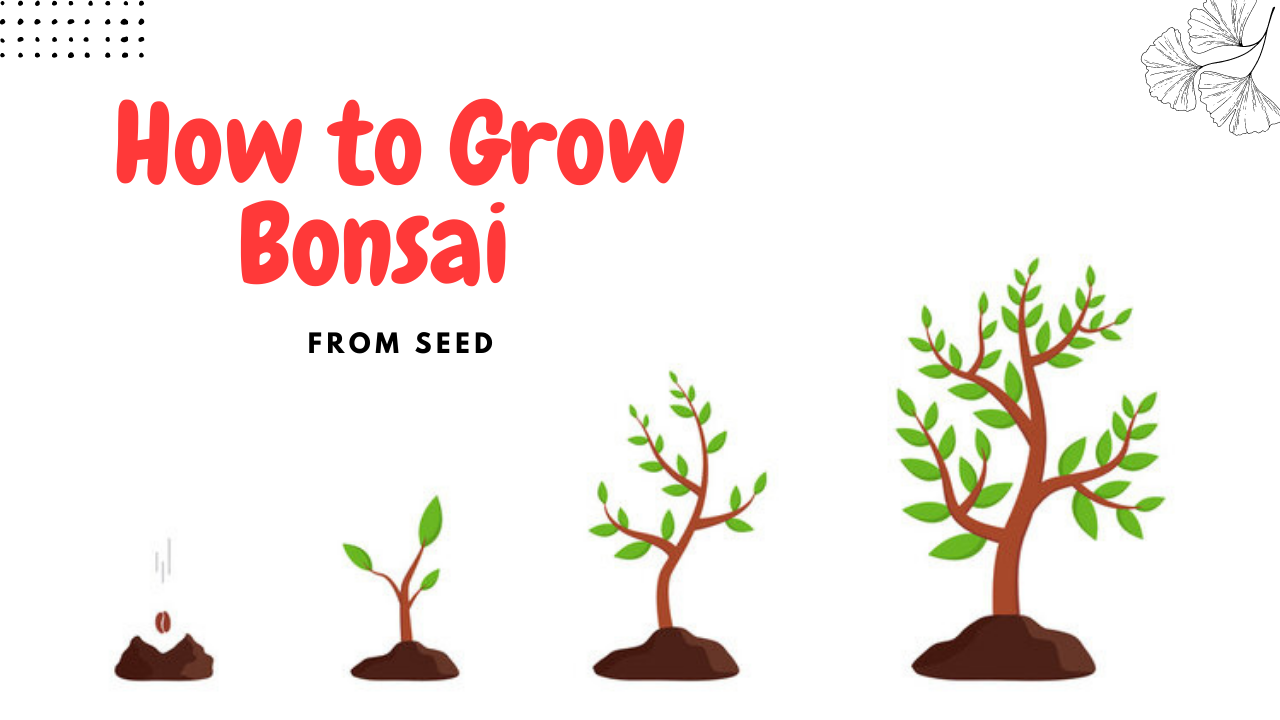
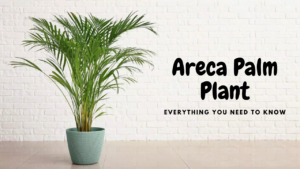


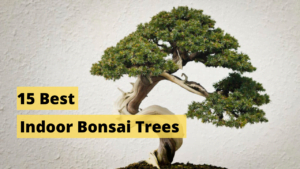
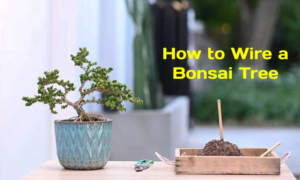
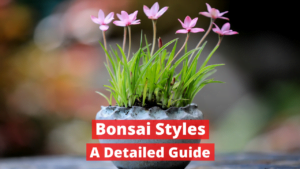
Very interesting topic, thankyou for putting up.
We’re glad you liked our blog.